There has been a lot of talk about the Russian Zircon/Tsirkon missile recently, particularly in light of strikes on Kiev in late March that were said to have used it. Since then, there have been several high level efforts from experts to delve into the precise details of the missile’s operation and secretive characteristics.
But most of all, there has been a general effort from the Western commentariat to deprecate Russian hypersonic technology as relates to those weapons utilized during the conflict so far. Thus I wanted to do a little explainer in order to dispel some of the myths surrounding these weapons on both sides, and get down to the actual realistic properties we can expect to see.
I’ll be pulling some of the analysis from a relatively informative—albeit highly biased—thread on it from a pro-UA NAFO missile expert because he perfectly summarizes all the most common Western accusations and misconceptions about not only the Zircon but all Russian hypersonics in general. However, he mostly knows what he’s talking about to a degree, so some of his conclusions reached are relatively accurate and worth sharing if only because he and his team are the first I’ve seen to take a serious analytical look at the Zircon.
The Zircon missile is shrouded in mystery more than most other Russian objects in that not only does no one seem to even know what type of weapon it actually is, but what it even looks like. All the most popular renders on the internet are in fact likely wrong. The most common depicts it in line with the Boeing X-51 Waverider and the recognizable shape of a scramjet style hypersonic missile, like so:
X-51 Waverider:
“Mythical” version of Zircon:
In fact as you can see, it mostly appears to be a copy-pasted Waverider, virtually identical.
What, don’t we know what it looks like now that Russia has fired several of them, you ask? In fact, no: that’s part of the mystique I mentioned. The reason is that during launch videos, the Russian MOD actually went so far as to blur the missile precisely to keep people from knowing which propulsion type it uses, as that would give away the game.
Here are two rare closeups of a Zircon being launched:
Furthermore, you can see the missile has a flat ‘cap’ on the front, even further blocking view of the type of intakes:
The cap gets jettisoned once the missile is in the air—here’s the P-800 Oniks missile jettisoning its cap for comparison purposes:
And here’s where some have connected the provenance of the Zircon. Just as the Kinzhal is assumed to be based on the Iskander, with some important modifications like the potential addition of an active radar in order to be able to hit ships, here too the Zircon is believed by some to be a highly reworked version of the P-800 Oniks. Here’s a photo of an Oniks being launched from a ship—note the same flat cap/fairing:
But the most important thing that means, is that the Zircon would therefore likely have a design similar to the Oniks, like so:
One of the reasons is that the Oniks is reportedly fitted with such a cap precisely because it has a spherical front ramjet intake, and the cap is meant to block debris from entering it during launch. This is in contrast to missiles which have a hidden air intake ‘scoop’ beneath the fuselage, like for instance the Kalibr, which wouldn’t have to worry about that:
That means the Zircon necessarily must have a similar spherical front intake because there would be no other reason to have a drop-off fairing like that to cover the nose. Also, it should be noted Zircon occupies the same exact VLS launch tube dimensions as the Oniks.
We do have a few more potential clues. For instance from the launch video there’s a grainy shot of the Zircon after the missile cap/fairing has been jettisoned. One interesting thing to note is there does appear a potential small depression that could point to a scoop akin more to the Waverider scramjet intake design, but that may also be an optical illusion of sorts:
Then we have the actual strike video from the test above. Keep in mind during such strikes on decommissioned ship targets the missiles are not equipped with an explosive warhead, so all you see is the inert missile striking the target kinetically:
It’s difficult to tell from the screenshots but it does suggest it may be shaped more conventionally, like the Oniks:
Also, note the speed. While it does look extremely fast, it’s questionable whether the terminal impact is hypersonic for a variety of reasons, not least of which being that the missile does not appear to be glowing hot nor have any sort of plasma bubble effect.
In previous articles like this one below, I’ve highlighted how the Kinzhal missile actually appears to be glowing red hot as it strikes even in broad daylight, compared to an Iskander (right) which has signs of high thermal charring along the nosecone but is no longer glowing:
For that very detailed breakdown of the Kinzhal and how hypersonic ballistic missiles function in general, visit this previous article:
If the Zircon is basically a remodeled Oniks, then how does it achieve such drastically superior performance?
There are a few key factors. Firstly, Russia had previously announced the discovery of new fuel types, particularly—as rumored—a proprietary aluminum nano-particle-based fuel called Decilin-M:
Next, the Zircon’s flight profile is likely to utilize a much higher altitude than the sea-skimming Oniks. During launch, the Oniks famously pitches over at a very shallow altitude, as can be seen in this photo:
The Zircon on the other hand is propelled by its rocket booster stage to much higher altitudes prior to pitching and heading toward the target, as can be seen in this video:
The Zircon is said to reach upwards of ~30km or ~90,000ft, where the atmospheric pressure is very low, allowing hypersonic flight without disintegration.
There are some issues, however. Ramjets are said to max out at hypersonic speeds, and are ideally designed for Mach 3-5. So detractors use this to opine that the Zircon is not a true hypersonic vehicle since it “likely reuses the Oniks” ramjet engine. However, there’s no evidence to suggest the Zircon doesn’t have a scramjet instead, or even a hybrid ramjet/scramjet, which have been tested in the past and are not out of the realm of possibility. After all, it was Russia that actually fielded the first ever ramjet, so it doesn’t strain credulity to suggest they could be at the leading edge of innovation in this area:
Here’s where we get to the heart of things. As I said, the chief accusation by the Western ‘experts’ is that a Zircon is not a “true” hypersonic missile, a charge most succinctly enunciated by the earlier NAFO ‘expert’. But the main reason for his mistake exposes a gigantic blunder not only on his, but the entire pro-UA commentariat’s behalf.
You see, they refer to a well-known Gerasimov statement of one of the Zircon test’s flight metrics to deduce the Zircon’s speed:
The missile covered 450km in 4.5 minutes, as per the above. That would be 450,000m / 270 seconds = 1,666.67 meters per second x 60 = 100,000 meters per minute x 60 = 6,000,000 meters per hour, or 6000 kilometers per hour. Divide that by Mach 1, which is 1225km/h (6000km / 1225) and we get = Mach 4.9.
And this is precisely what the NAFO ‘expert’ concludes:
Unfortunately, this is an absolutely disastrous amateur mistake, exposing one of the pro-UA commentariat’s biggest and most well-known defense experts as totally incompetent.
You see, Mach 4.9 is the average speed it took for the Zircon to reach the target from the moment of launch. The problem is, the missile spends anywhere from the first 1-3 minutes just accelerating to hypersonic plateau, as well as the fact that it’s not traveling in a straight line but rather sharply upwards for a large portion of the opening. Do you mean to tell me NAFO experts have no clue about differential aspects and how it affects the perceived time on target?
To belabor the point, just as a small primer, here are some acceleration rates for an F-15, which is one of the fastest accelerating fighter craft:
You’ll note it takes it upwards of 200-300 seconds to reach just Mach 2. Similarly, how long does it take a rocket like the Falcon to reach the hypersonic barrier of Mach 5? From a SpaceX launch:
It takes 2.5 minutes for the rocket to accelerate to ~6200km/h which is roughly Mach 5.
Think about that for a moment. This means the Zircon may first be going upward at a sharp angle, not even making much headway toward the target yet, for upwards of 2-3 minutes before it even reaches its final cruising speed and altitude, at which point it fully pitches over to a horizontal azimuth. Thus the 4.5 minute flight time represents at least 2 minutes of wasted climbing time. This is akin to timing Usain Bolt from the moment he leaves the locker room to the starting block, then cutting the timer when he passes the finishing line, and averaging that out to say Usain Bolt actually runs at 5mph rather than 27mph, all because you had the timer running when he was walking and warming up.
What does this tell us?
That means if the Zircon averaged nearly Mach 5 (4.9) in light of the above, counting the steep climb, acceleration, etc., then the actual top speed it likely maintained for the cruising duration of the flight has to necessarily be somewhere in the Mach 7+ range. Since Mach 5 is an average that includes all the lowest velocities of the initial acceleration, then in order to hit that average, the Zircon would have had to maintain well above Mach 5 afterwards to make the math work.
And of course, the usually quoted top speed is Mach 7-9:
And surprise, surprise, what was the actual full statement by Gerasimov that pro-UA experts very conveniently left out?
Anticipating one complaint: but since the Zircon fires off with an initial rocket boosted stage, doesn’t it get to maximum velocity/altitude very quickly?
Beyond the fact that I showed that even rockets can take 2-3 minutes to reach such speeds, there is also the fact that we can see from launch videos that the Zircon’s booster stage appears quite short. Watch the video a few paragraphs earlier of the launch, you can see the booster burn out seconds after launch which means that the main engine(s) likely take over at that point, accelerating fairly slowly, more in line with the F-15 chart showed above.
Also this:
"The X-51 is initially propelled by an MGM-140 ATACMS solid rocket booster to approximately Mach 4.5" - and that happened after air launch from B-52. This Onyx-size booster still looks too small.
The Boeing Waverider was propelled by a large ATACMS booster, which could only get it to Mach 4.5. Meanwhile, the Oniks/Zircon boosters you can see in the pics are comparatively tiny, no where near ATACMs size, and therefore would logically be able to boost the Zircon to a fraction of Mach 4.5, which means climb/acceleration time would dramatically increase before the Zircon can actually hit peak velocity.
Of course, that may offer another clue, given that scramjets cannot even operate below hypersonic threshold, and such a short booster would likely not allow reaching hypersonic plateau which would logically suggest the missile to have some form of hybrid propulsion—but that’s just speculation.
In support, we have two accounts from actual Ukrainian sources of the Zircon’s speed. One Ukrainian publication quotes the airforce with tracking the Zircon during one of the attacks on Kiev at over 9000km/h, which would be Mach 7.3:
And another was a claim by a pro-UA OSINTer with tens of thousands of followers whose ‘source’ allegedly stated that the Zircon covered the distance from Crimea to Kiev in ~3 minutes:
He was lambasted by colleagues, as such a speed would represent an average of Mach 9.4, which means given what we discussed about slower rates of ascent/descent, it would have had to hit much higher apogee speeds—but who knows.
We get to the last interesting proposition. The ‘analysts’ state the following, which does consort with some other data and reports we’ve had:
Alongside Kh-32, Tsirkon has the greatest terminal velocity of any Russian missile system employed in Ukraine, 50-100% greater than Iskander-M/Kinzhal.
Firstly, we must recall that spokesman Yuri Ignat himself openly admitted that the legacy Soviet Kh-22 missile (on which the Kh-32 is based) is the only Russia missile they have not been able to shoot down even once throughout the course of the entire war:
Many have been confounded as to why that is. Besides the fact that Soviet-engineered weaponry appears superior to most modern Russian weaponry from a vastly depleted and deteriorated defense industry, there’s also the fact that the Kh-22 operates in two contrasting modes, from wiki:
It can be launched in either high-altitude or low-altitude mode. In high-altitude mode, it climbs to an altitude of 27,000 m (89,000 ft) and makes a high-speed dive into the target, with a terminal speed of about Mach 4.6. In low-altitude mode, it climbs to 12,000 m (39,000 ft) and makes a shallow dive at about Mach 3.5.
And the fact that its liquid fueled rocket engine presumably continues burning even in terminal phase, whereas ballistic missiles like the Iskander typically have a burnout phase in their solid rocket motors, after which they dive down into a sort of glide and, according to some like the Western ‘experts’ above, slow down to a terminal velocity of as little as Mach 1.5 - 2.5. The Kh-22 on the other hand potentially retains Mach 3.5 - 4.5 speed while also being capable of shallower trajectories.
Personally, my own research seems to peg the Iskander’s terminal speed at potentially Mach 3-4, possibly higher depending on circumstances as all these missiles have different types of modes they can operate in which does alter the terminal performance characteristics. For instance, the Iskander is said to have terminal evasion maneuvering if/when necessary—but utilizing this would bleed a lot of energy and lower impact speed.
But that’s all to say that, the Zircon likely also continues burning its engine into terminal phase and potentially impacts at higher speeds than the Iskander or other ballistics while also retaining what is probably a smaller radar cross section as well as more varied strike profiles that can be tailored to the specific target environment/geography/topology:
Let’s take a look at the chief complaints one final time. The ‘experts’ have long purported that none of Russia’s hypersonics are “true hypersonic weapons”, tailoring a new excuse for each one. In the Iskander’s case it’s because they claim it doesn’t retain hypersonic velocity at the terminal phase. In the Zircon’s case we now hear it’s two-fold:
If hypersonic cruise missile is defined as traveling at hypersonic speed for the majority of its route, or
Utilizing an air-breathing scramjet engine
We’ve already debunked #1, as the “expert” amateurishly blundered by calculating the Zircon’s velocity wrong and assuming it to be just a hair under Mach 5.
As to #2, this is totally arbitrary and no where is it written that a hypersonic missile has to have a scramjet. It comes from the assumption that only scramjet can do hypersonic, even though technically ramjets—I believe—can go up to Mach ~6 or so.
This is the same disingenuous rationale that the U.S. uses to call its own fighter jets “5th gen” while Russia’s are relegated to 4th and 4.5 gen. You see, the U.S. arbitrarily invented its own definition of what 5th gen entails, very ‘conveniently’ leaving out many advancements that Russian jets enjoy. For instance, they stipulate that full aspect stealth is required to meet ‘5th gen’ spec, yet mysteriously, 3d thrust vectoring, which is a common sense staple of true 5th gen fighters and which all the latest Russian fighters have and the F-22 doesn’t, is for some reason ignored.
Lastly, it assumes the Zircon is not a scramjet when in reality, no one actually knows. The assumption was merely based on its design seemingly no longer fitting the original conceptual drawings which showed the classic scramjet under-scoop, plus the miscalculated sub-Mach-5 error earlier, since anything below Mach 5 definitionally cannot be a scramjet as scramjets can’t operate below Mach 5.
But the problem is, when it comes to hypersonic weapons, the U.S. doesn’t have any in service platforms to even use as this hypothetical baseline for such an arbitrary list of requirements. All they have is a series of long-standing “in development” projects, many of which have already been cancelled after failing. But let’s take a look at them to see what a “real hypersonic” weapon looks like, as per the superlative U.S. defense industry.
Let’s start with the aforementioned Boeing X-51 ‘Waverider’.
Remember how they make fun of Russian early prototypes? This thing looks like the air intake is held together by cheap masking tape. This thing was not the most impressive, traveling mostly at Mach 4 and change during a long boost phase and only able to only hit Mach 5.1 for a few moments once or twice, after failing every other test—which included catastrophic crashes—and being eventually cancelled:
Next:
The newly announced Lockheed ‘Mako’ hypersonic missile, which is in development and meant for the F-35 and other fighters.
Wait, what’s this? Solid-rocket motor and barely hitting Mach 5? So, no scramjet, no airbreathing—thus, not a true hypersonic missile going by earlier logic.
Next:
The Navy’s proposed HALO (Hypersonic Air Launched Offensive Anti-Surface) missile. It has a big scary name and is slated for somewhere in the next decade—but make sure to ignore this fine print:
Wait, so you named your missile the Hypersonic Offensive…etc., and then admit it can’t even hit hypersonic speeds? Well, this is an embarrassing list so far. Let’s see what else they have.
Then there’s DARPA’s HAWC, which is a scramjet missile that did appear somewhat successfully tested though for whatever reason they’ve decided to mostly use it as a demonstrator platform and it has not yet yielded any in service weapon. Interestingly, even as a scramjet it still apparently only managed Mach 5 at the most, while all available data seems to indicate the Zircon going minimum Mach 7-8 if not faster.
The problem is, even the HAWC merely “achieved” Mach 5, i.e. at its top speed, but there’s no word on what its actual terminal speed or average cruise speed are. If it’s top speed is Mach 5 at highest altitude where low air density is favorable, then it’s almost certain that it’s no longer hypersonic at terminal impact—which, once again, going by the standards of the previous ‘experts’, means it’s not a “true hypersonic” vehicle, particularly given that its lackluster Mach 5 speed means its “average” speed (when taking terminal descent phase and opening acceleration/booster phase into account) could very well be quite below Mach 5.
There are a couple others like the SCIFiRE about which not much is known, and is not scheduled to “enter service” until something like the 2030s anyway, so it’s pointless to even speculate. Also, I won’t count hypersonic glide vehicles like the DARPA Falcon, LRHW / Prompt Global Strike systems as those are exothermic and basically ICBMs and are of a completely different class. Russia already has the Avangard in that class, which is in service and therefore impervious to criticism.
The last system worth mentioning, and which appeared closest to some kind of realistic development, was the much talked about AGM-183 ARRW (Air Launched Rapid Response Weapon). It’s the weapon Trump once dubbed America’s upcoming “super duper missile” and was a boost-glide vehicle that is essentially the U.S. version of the Kinzhal, which was meant to be fired from a plane with a solid rocket motor before gliding to its target with a presumed ballistic or semi-ballistic trajectory.
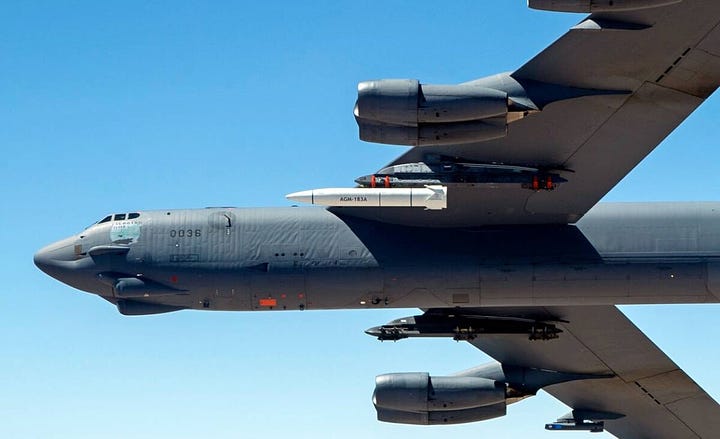
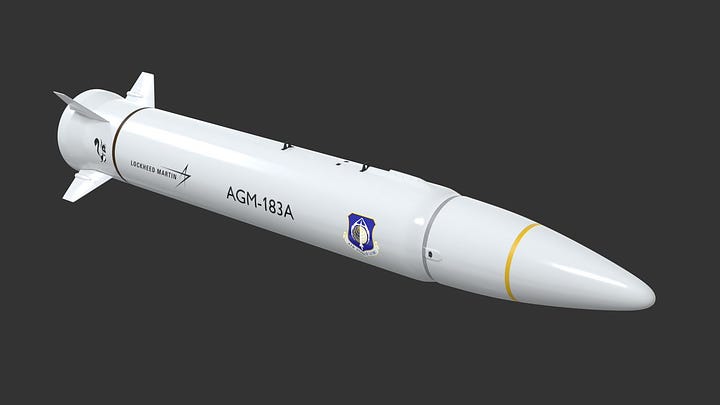
The problem is, the ARRW failed the majority of its tests and was notoriously cancelled last year, after a final humiliating failed test.
However, there’s now claims it was quietly restarted—but it’s hard to be sure because even after its cancellation, the airforce reportedly earmarked the remainder of the program’s money to carry out a few more tests just to eke out some more data.
Either way, what becomes clear is that virtually none of the U.S.’ own programs live up to any particularly impressive or ironclad “hypersonic standards”. Most of their systems were likewise either rocket powered or barely hypersonic to the point of it being questionable—or just flat out failures to begin with. Thus, it’s difficult to understand how one can accuse the Russian vehicles of failing some nonexistent ‘standard’ that no other country on earth has even been able to approach.
The fact is, Russia remains the only country on earth with numerous in service hypersonic weapons of every variety: exothermic glide vehicles with the Avangard; ballistic missiles, both air and ground launched, with the Iskander and Kinzhal; cruise missile or aeroballistic cruise missile as some may consider the Zircon; and even the world’s only hypersonic air-to-air missile for fighter jets, the R-37M, which is not only already in service, but even has several kills in Ukraine.
As a final note, Ukraine claims to have downed a Zircon over Kiev:
The problem is, the totally atomized pieces are not consistent with what an intercepted missile looks like, but rather what a missile which has hit its target and exploded looks like. Particularly a hypersonic vehicle will likely embed itself deep into a structure or ground before exploding, with all its fractured pieces being recoverable in the surrounding earth/material, etc.
There are dozens of photos of downed missiles from both Ukraine and Russia, and they often or even usually look like this Kh-101 downed by Ukraine:
Or this shot down Tochka-U, which is also hypersonic:
How about the famously shot down Storm Shadows, many of which have been recovered almost fully intact?
Granted, a vehicle traveling hypersonically could be argued to theoretically break apart in much more violent fashion when met with an interceptor, given that their combined speeds would be quite high. But then, most interceptors are not kinetic but rather proximity fragmentation fused, so it’s not certain that a hypersonic vehicle would suffer such catastrophic atomization consistent with many other photos of recovered pieces of missiles which actually successfully hit their targets.
The ultimate arbiter of course is whether you have the intact warhead. In the shootdowns of the Storm Shadow, they did in fact recover the fully clean warhead intact, which is right there:
If the “Zircon” was shot down as claimed, where is the intact warhead?
That said, as a last note, it is interesting that in the recovered artifacts there appears to be thick woven thermal insulating materials as well as possible carbon fiber composite of some kind:
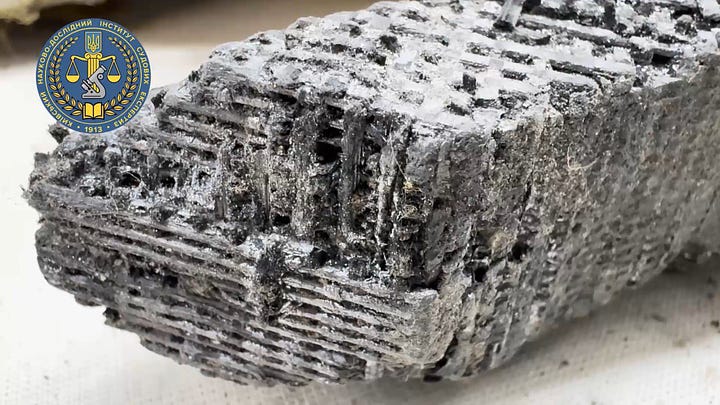
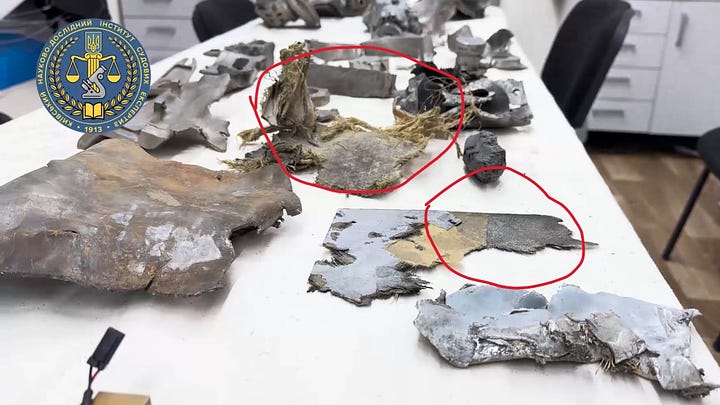
Which appears to point to hypersonic flight as otherwise the missile would not require special thermal protection of this sort.
While both U.S. and Russia have successfully shot down ‘hypersonic’ mock vehicles in tests under perfect conditions, with the vehicle trajectories fully known and going in a static, predictable line, it’s still questionable how often such vehicles can be shot down in real war time conditions. As such, my guess is these recovered parts are from a successful strike, thus the catastrophic brisance visible.
As a final adjacently related note, I wanted to make a quick comment on news that Russia has been utilizing a new ‘unstoppable’ stealth missile, the Kh-69, which is a stealthy variant of the Kh-59, a somewhat obscure air-launched cruise missile that doesn’t get much coverage compared to the Kh-101.
The Kh-69:
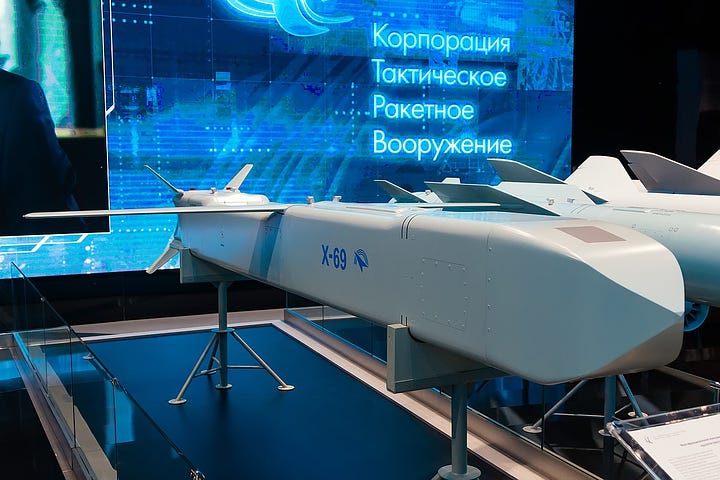
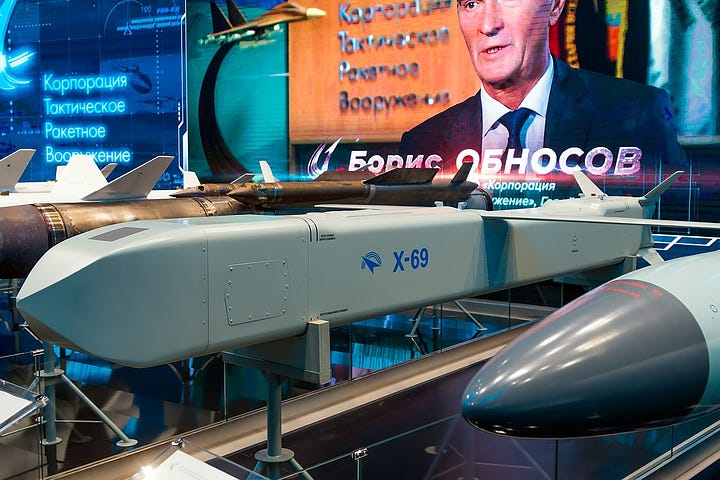
From Wiki:
On 11 April 2024, Ukrainian sources claimed debris of a Kh-69 missile were found on the site of Russian missile attack against Trypilska thermal power plant (TTPP), which was completely disabled as a result of the attack. The attack "destroyed the transformer, turbines and generators" of the TTPP. The number of missiles used in the attack was six, and none were disabled by the Ukrainian air defences.
You see, not only is the missile reportedly extremely accurate, hitting each turbine room in turn with sniper-like precision:
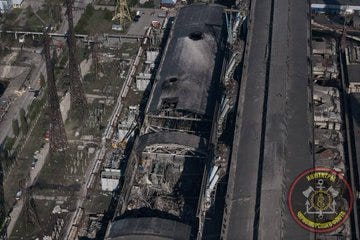
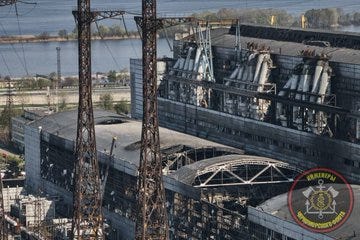

The other important thing is its speed is reportedly 1000km/h, which is Mach 0.82 and much faster than the Mach 0.59 or so that the Kh-101 achieves, though it can allegedly boost to 0.8+ in terminal or perhaps with different variants, though I don’t think we’ve seen that.
The Kh-69 also reportedly has a much lower cruising altitude, at a mere 20m, in contrast to the average being something like 80-150m for most missiles, including the Kh-101 and Kalibr. Its stealthy design plus the extremely low altitude and high speed make it harder to intercept.
But the most important thing of all, is that this missile can actually be carried by Russian Su-34s. The reason that’s a gamechanger is because as we’ve discussed many times here before, Ukraine and its NATO allies have a system in place of tracking Russian missile launches due to the limited nature of the platforms. For instance, Kinzhals are tracked by Mig-31K takeoffs, of which there’s a low number of both airframes and operating airfields. Kalibrs are tracked by the ships/subs/vessels and Kh-101s of course by the easily tracked Tu-95 takeoffs.
But the fact that the Kh-69 can be operated by Mig-31, Su-30/34/35/57 means any of the hundreds of buzzing planes around Ukraine can be sporting it at any given time. This makes tracking its launch impossible as it could come from any direction, launched by the far more ubiquitous Su-34s which operate from a much broader complement of airfields. This makes the missile much more flexible and ‘stealthy’ in more ways than one.
śl Polska writes about the impotence of the Ukrainian air defense system against our Kh-69 missiles. The use of these missiles made it possible to destroy the largest power plant in the Kiev region from the first strike. The key to the success of the X-69 is its low altitude and high accuracy. It flies at an altitude of 20 meters above the ground.
MIM-104 Patriot, German IRIS-T and French SAMP-T failed to stop these missiles, the newspaper notes. In addition, the possibility of launching these missiles from the Su-34 or Su-35 dramatically changes the alignment of missile attacks on Ukraine. The missile range of 400 km is more than enough to hit most targets in enemy territory.
If you really enjoyed the detailed report, be sure to subscribe or toss me a tip at: https://buymeacoffee.com/simplicius
Until next time!
Your support is invaluable. If you enjoyed the read, I would greatly appreciate if you subscribed to a monthly/yearly pledge to support my work, so that I may continue providing you with detailed, incisive reports like this one.
Alternatively, you can tip here: Tip Jar


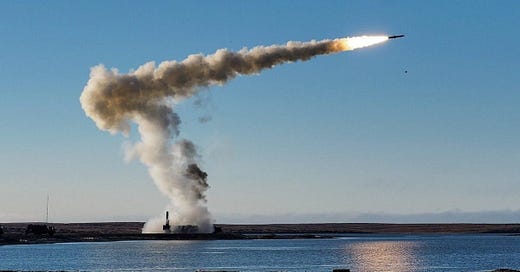


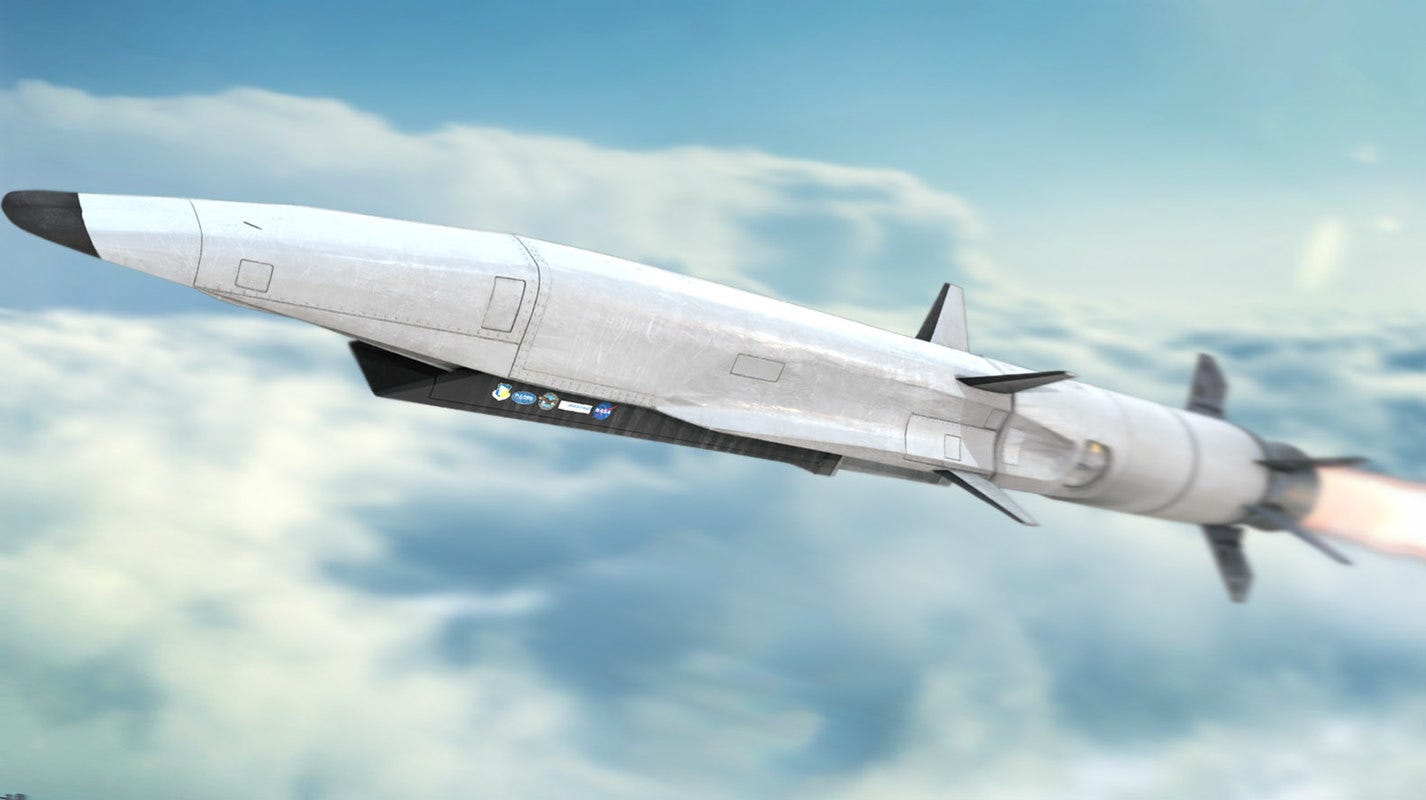
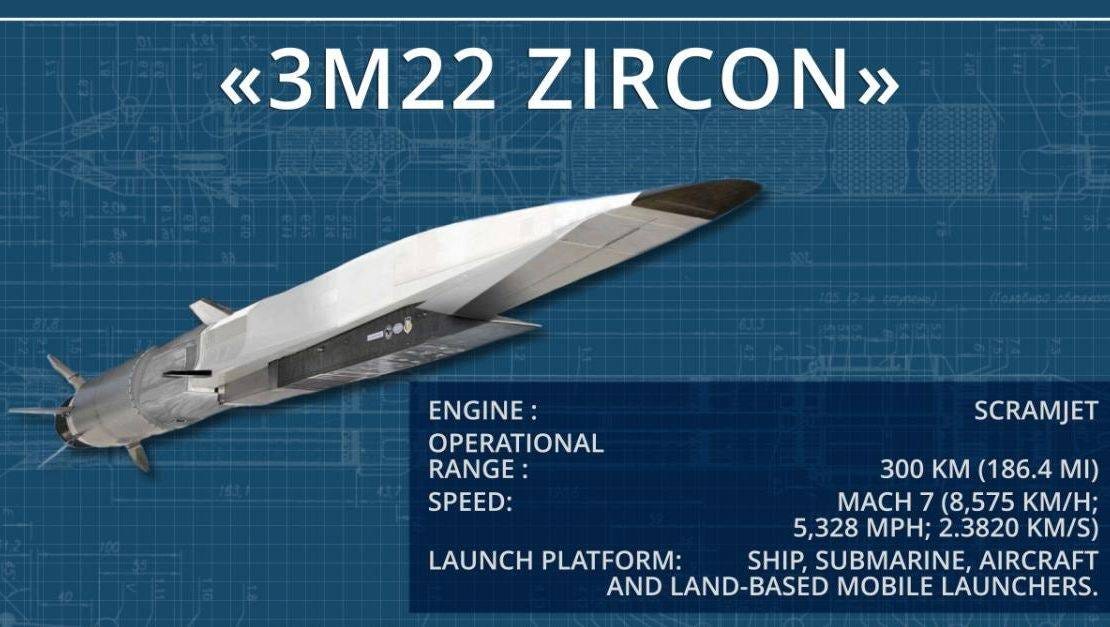


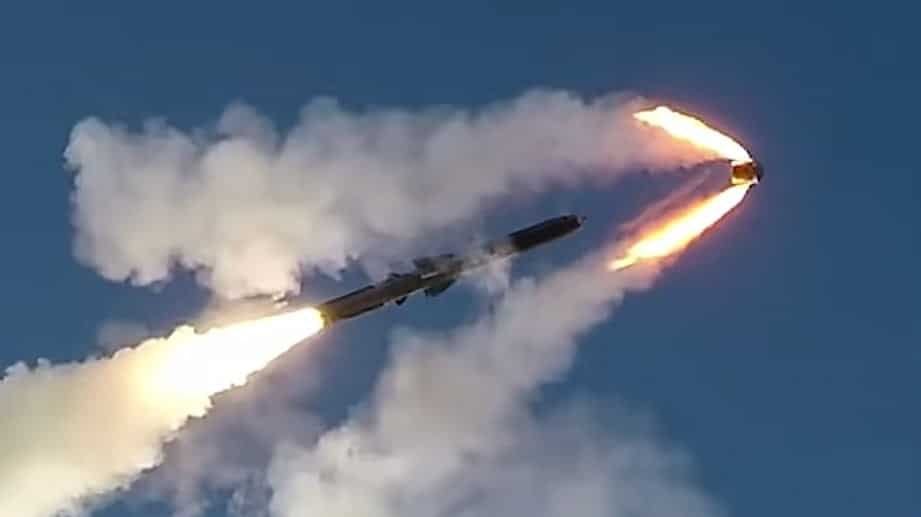

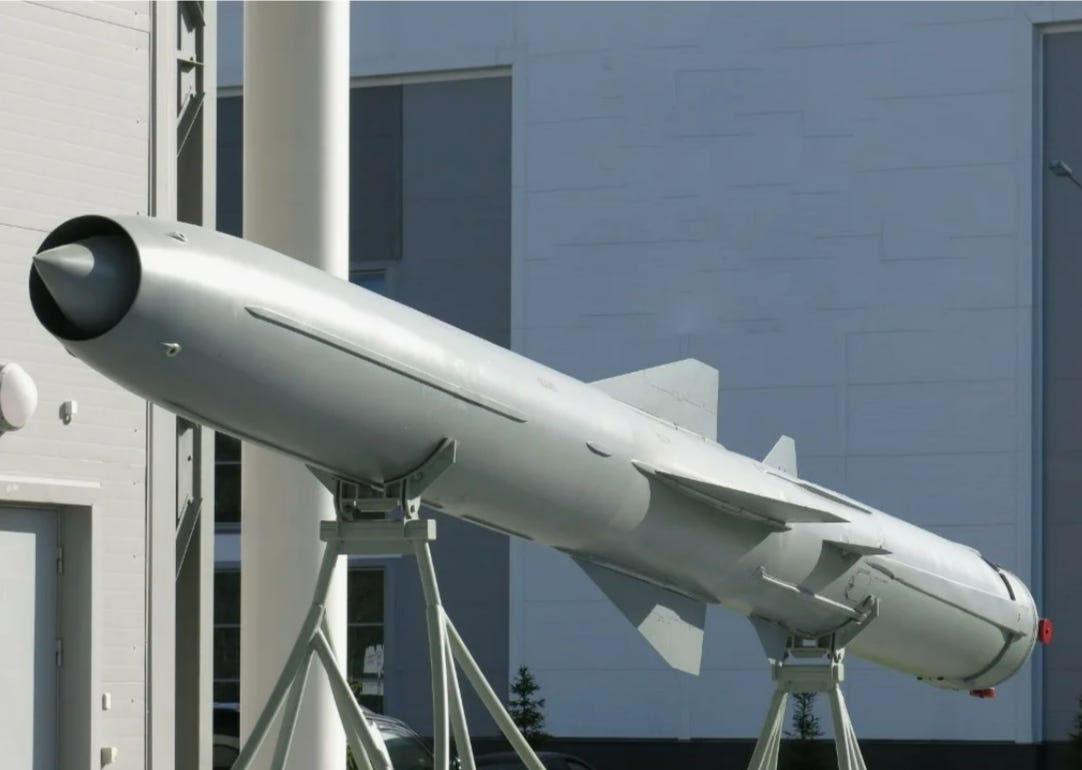
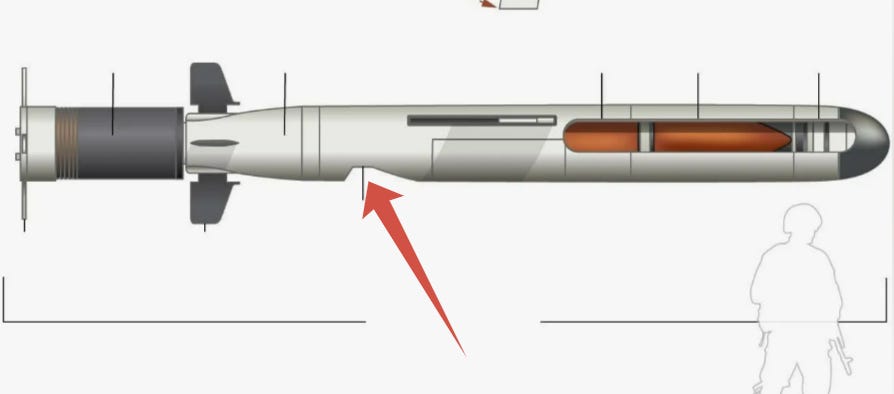
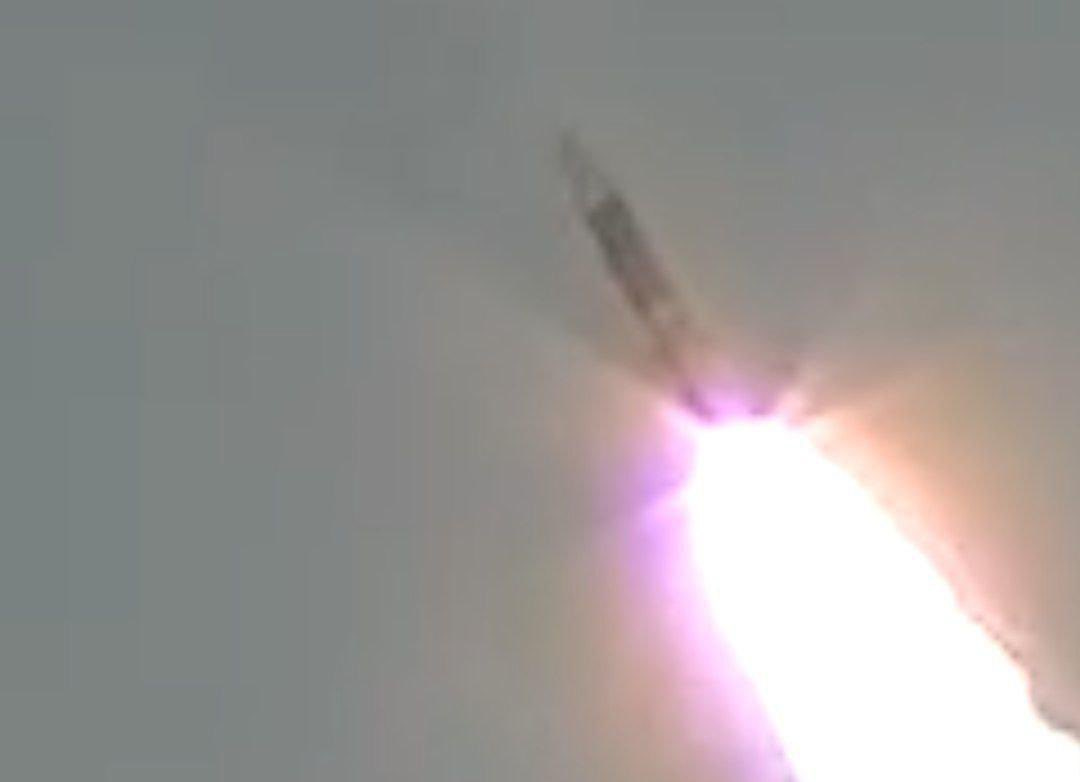


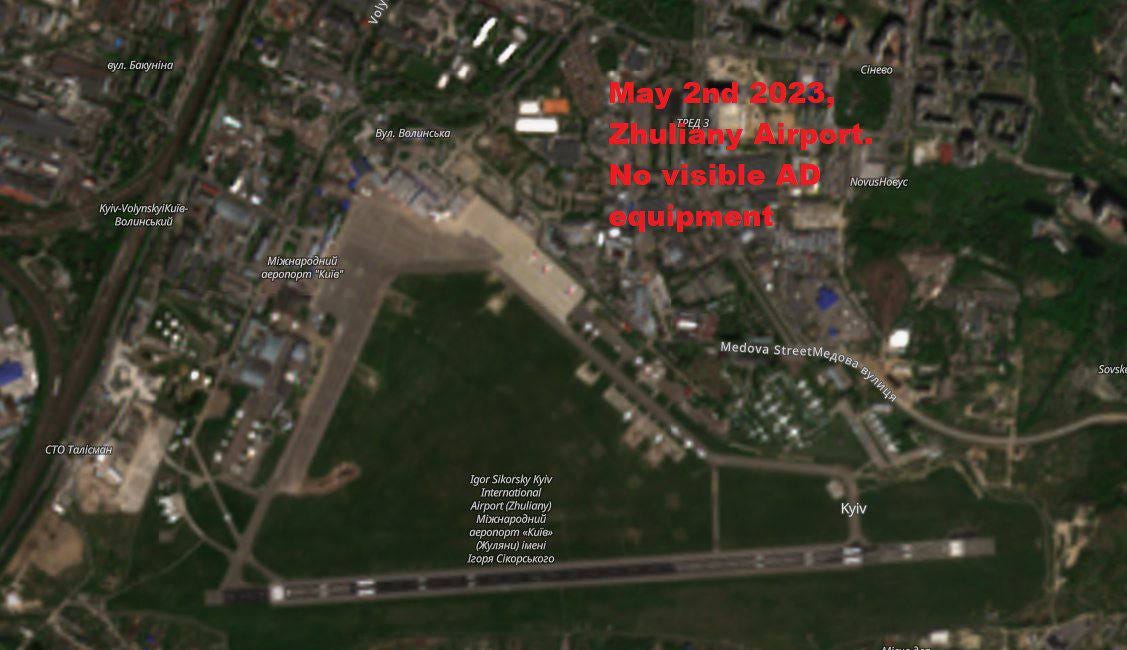
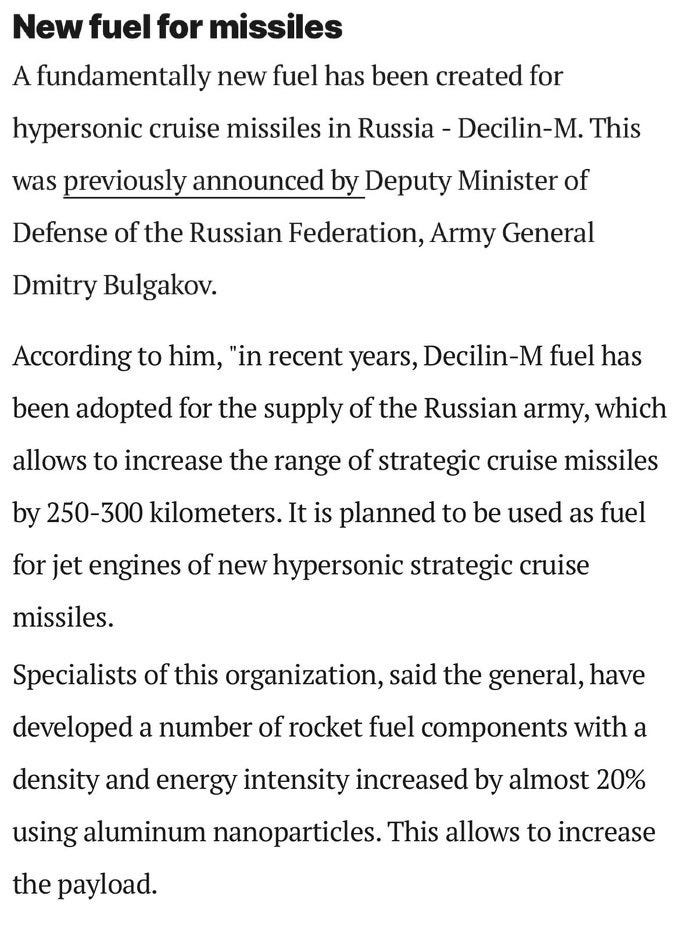

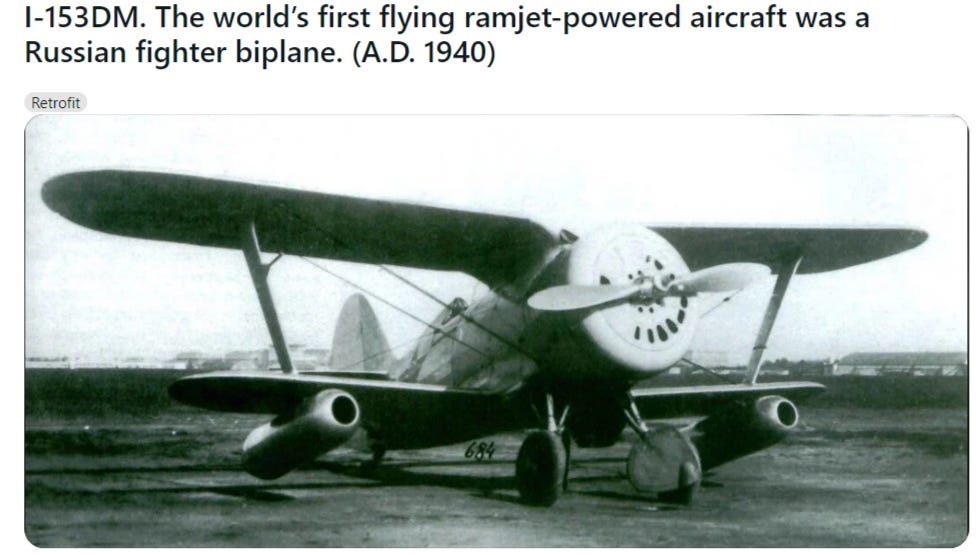
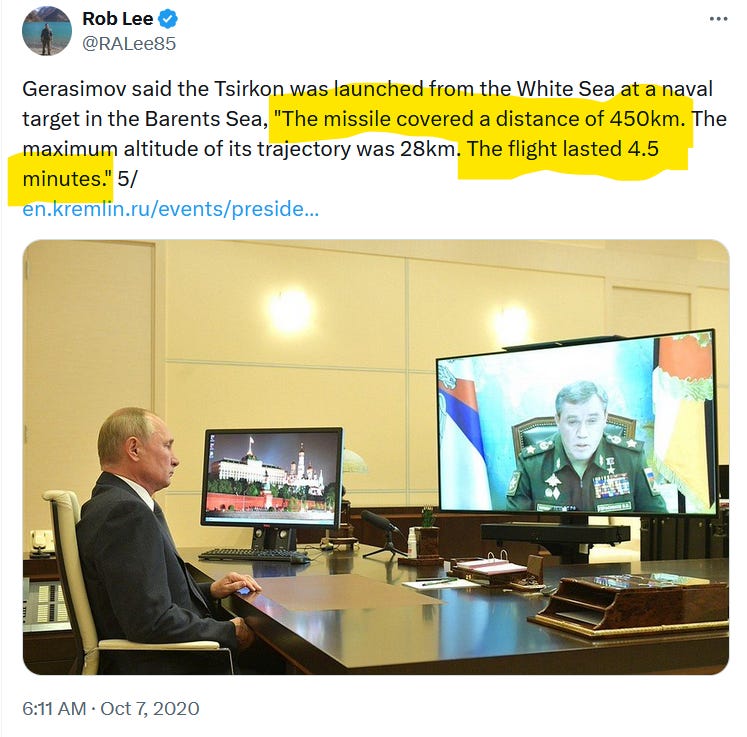

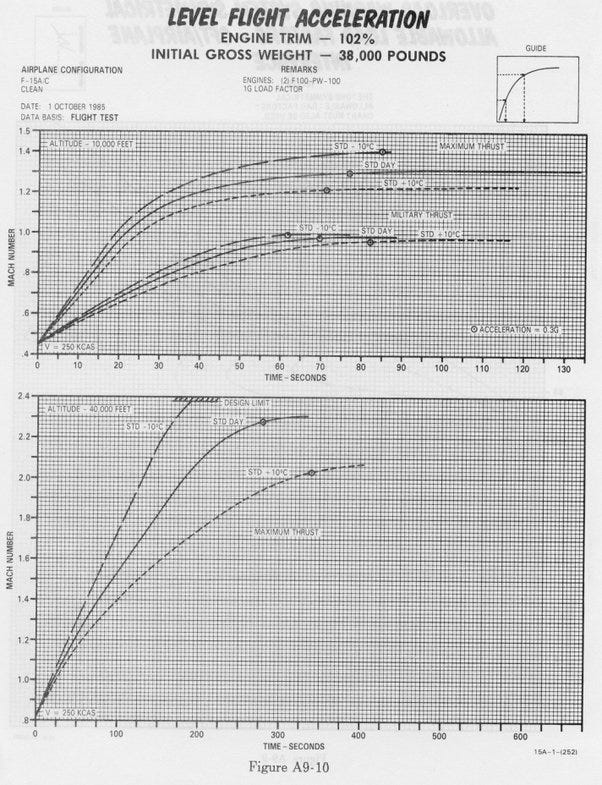



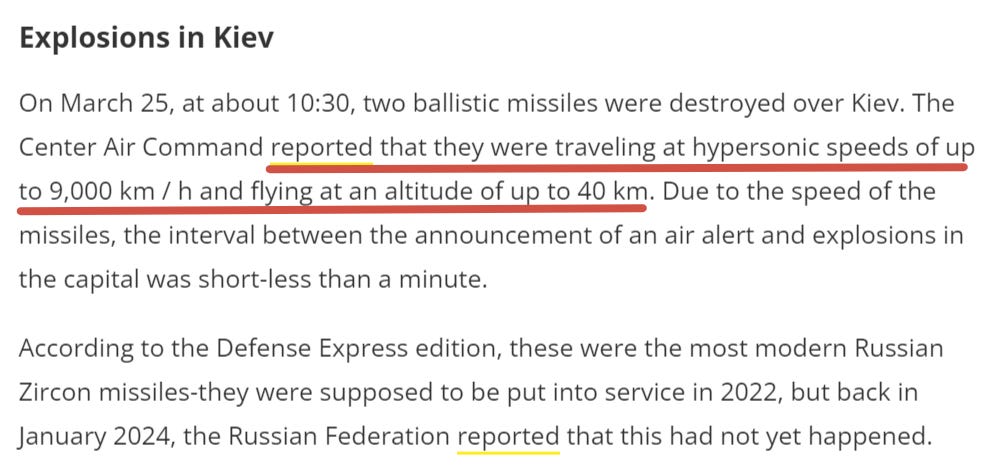
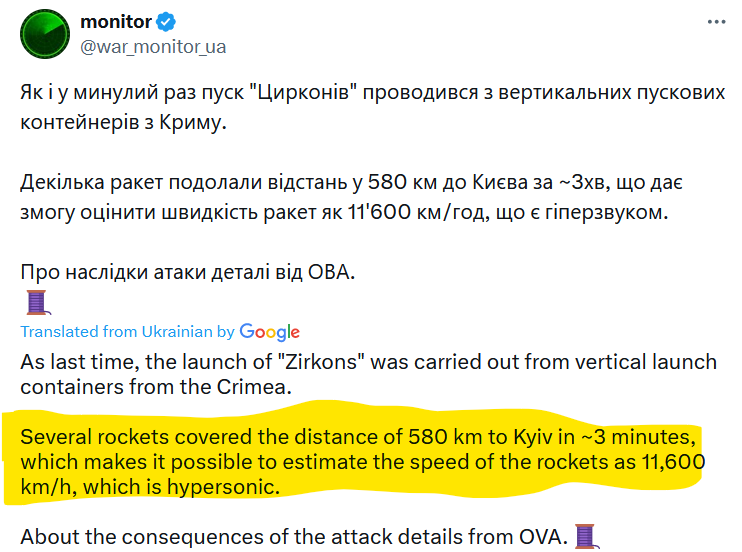

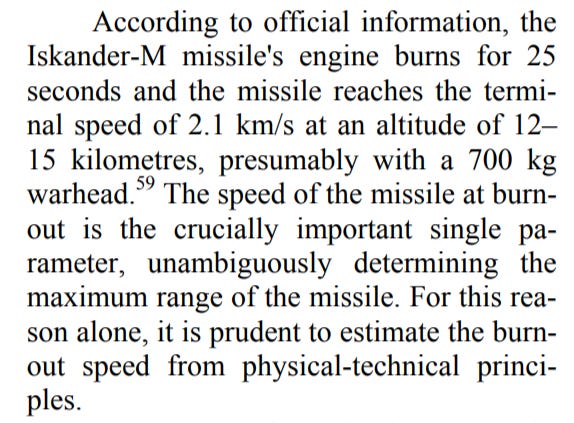
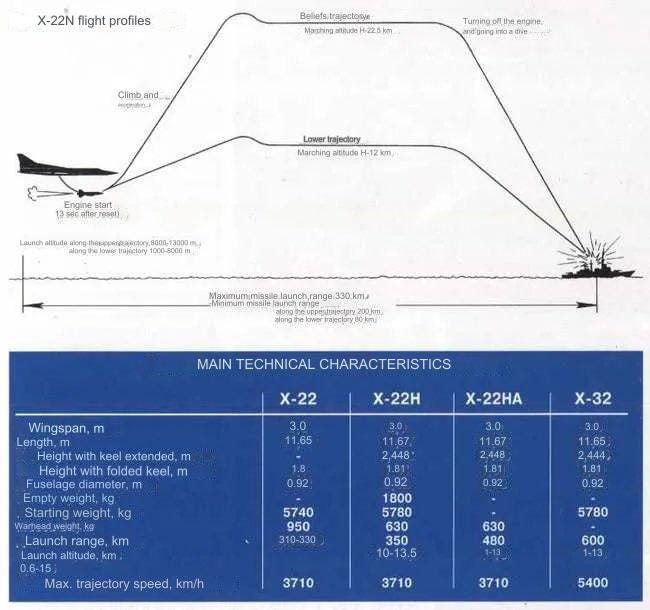

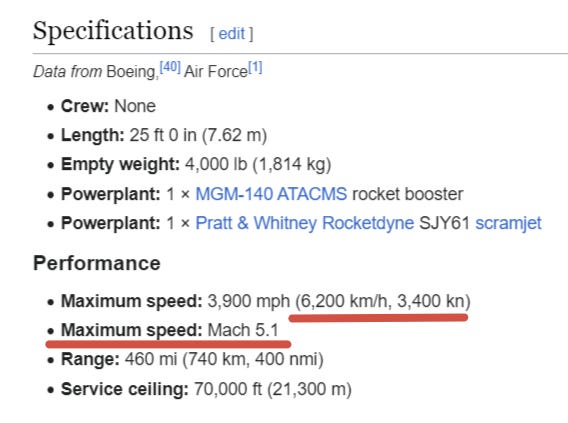
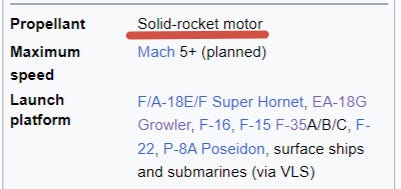



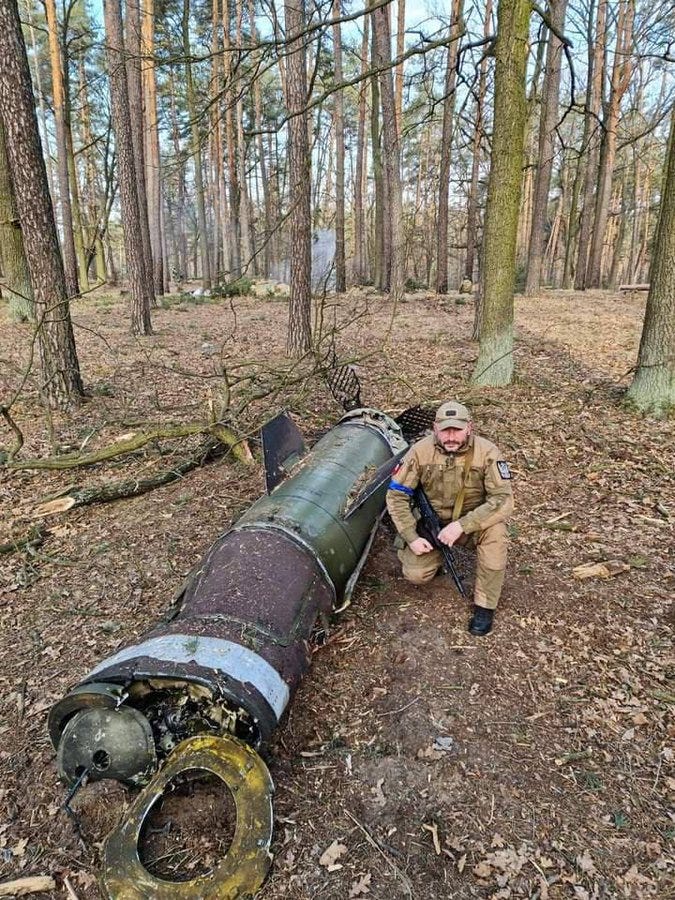
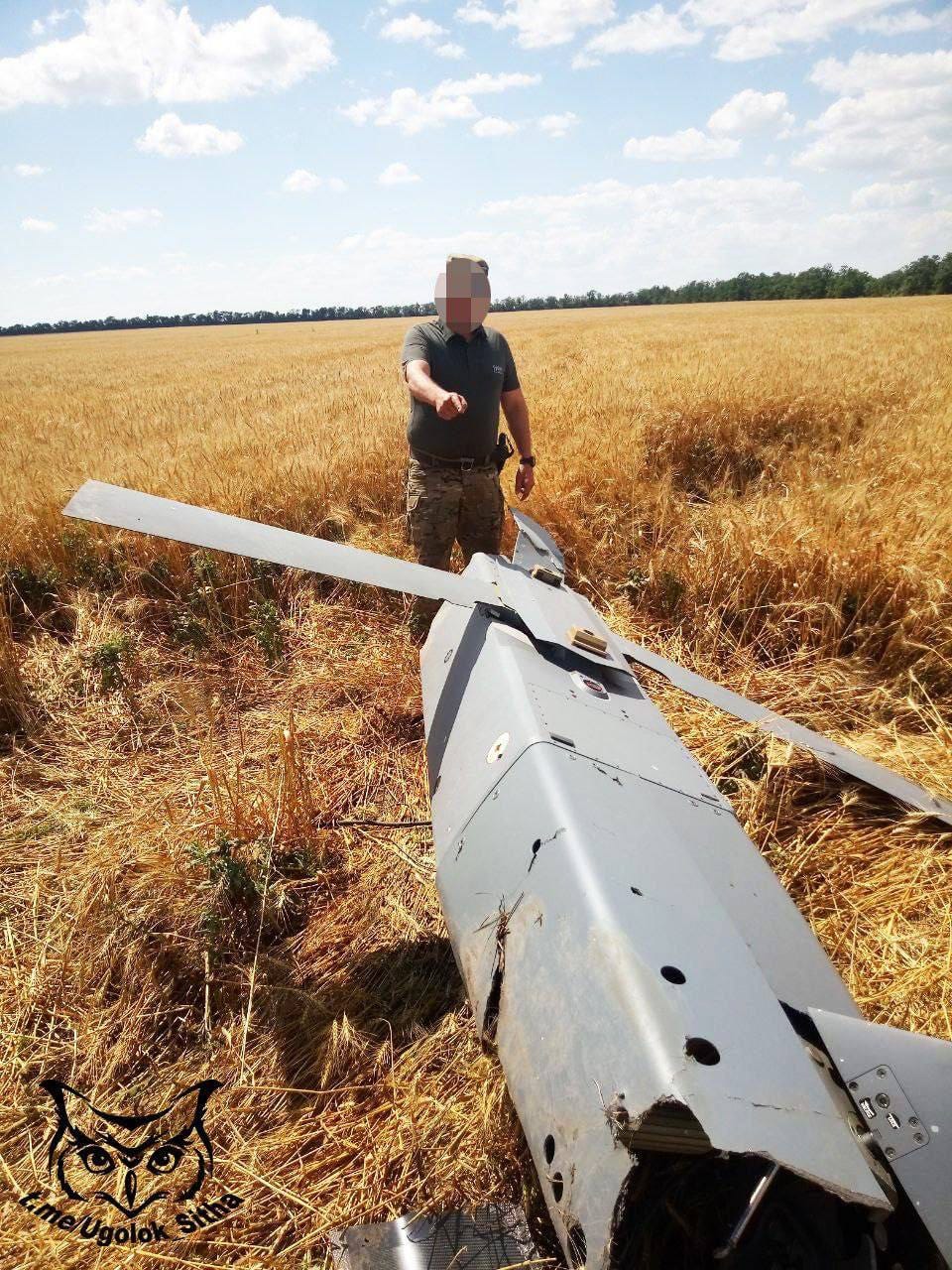
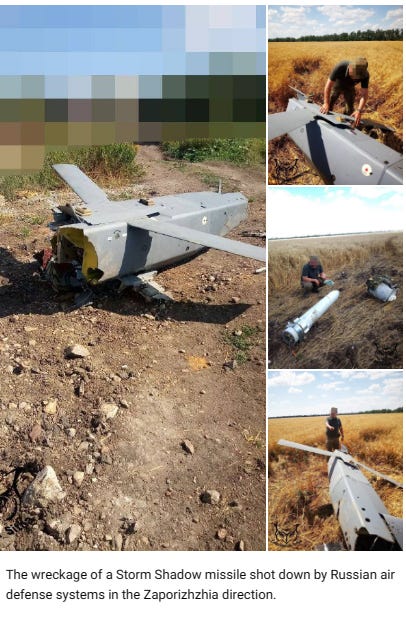
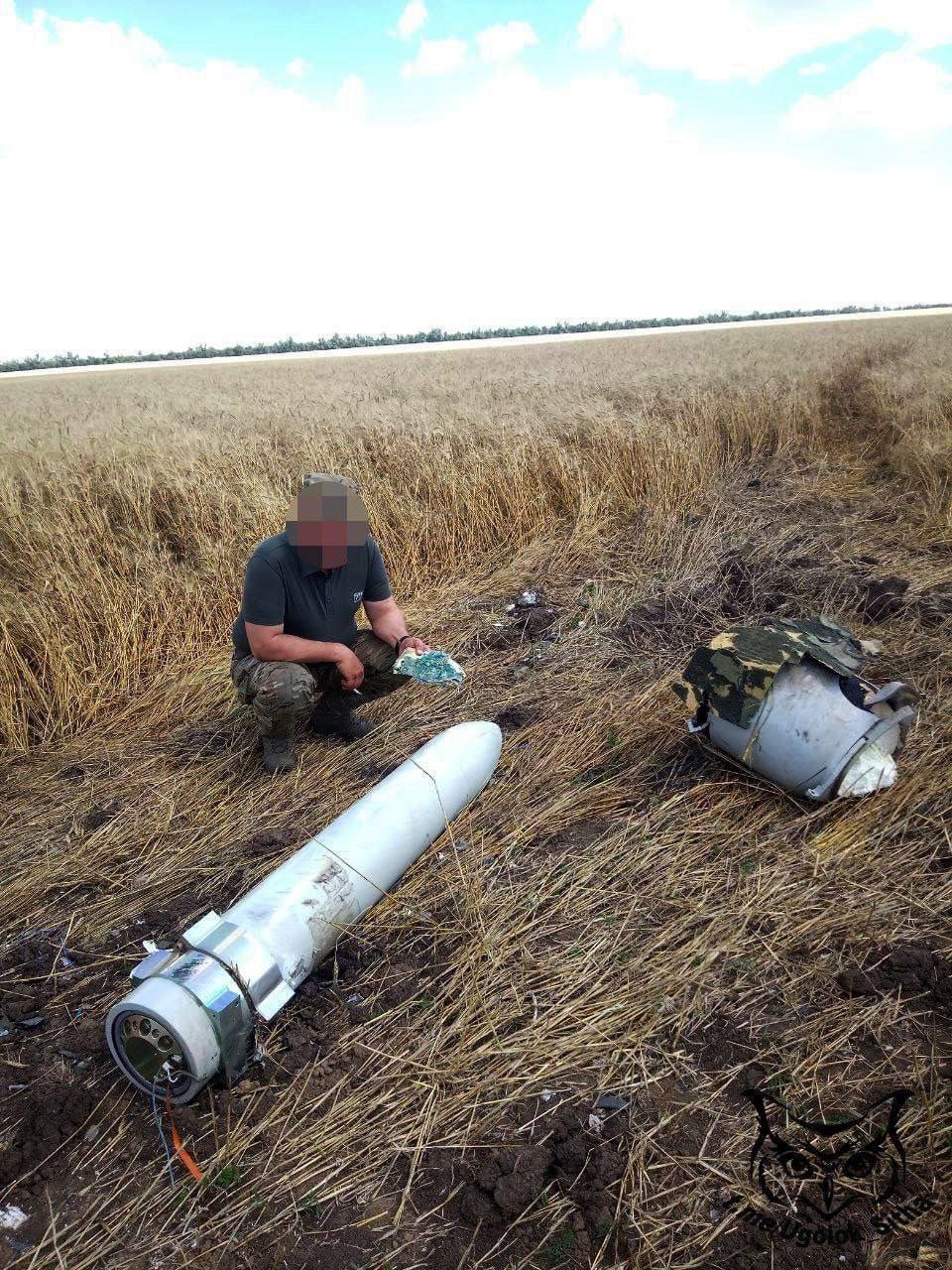

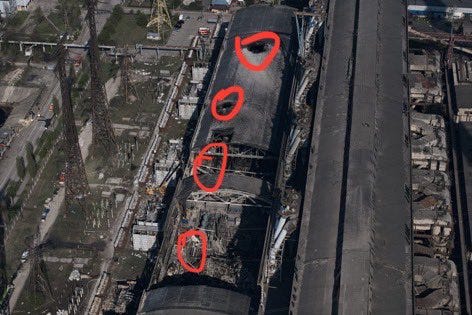
What I've observed over the last eighteen plus months is that the west is achieving hypersonic speed in its downfall, and now even bunkers aren't safe. I find that comforting news.
The major issues that face the US and the combined west on a whole in relation to hypersonic missiles and Russia's technological resurgence in relation to military development other than the actual dangers these developments pose was a strategy developed by RAND in the 1960s. The US realised it could not afford to compete with the Soviets military advance so the RAND corporation developed the idea of exaggerating US military developments so as to let the Soviets spend themselves into oblivion thereby destroying the Soviet economy with military spending. This strategy may have worked, that is debatable but what did happen is the Soviets did put in the research and may have broken the code on some of the silver bullets. One thing for sure the US never did change the strategy of overhyping its capabilities as a means of deterence so as not to actually spend on military development but more to use it as a grift for profit. The Russians seem to just stop attempting to compete, why build huge expensive aircraft carrier battle groups when you can develop anti ship and submarine technology to sink them? It's just cheaper. Why spend to create a stealth fleet to compete when you can develop anti-aircraft system to shoot them down? Why not just build an aircraft just stealthy enough to shoot down the refueling tankers? As no matter how stealthy an air craft is it is still limited by range and an airfield to take off and land. Or just create a wide range of precision missiles, in the end a missile is a one way trip no worry about coming back of pilot safety. In the end why spend millions to design a pen when a pencil is more than capable of performing the same task? The west as always have found themselves entangled in their own trap, just like debt that was meant to ensnare the developing world has now entangled western countries.